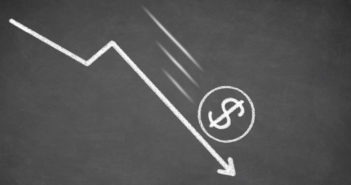- US GDP grew by 3.5% annualized in Q3, above expectations and this followed an excellent Q2.
- The US Dollar ticked up at first but is now retreating.
- There are three reasons for the disappointing reaction.
The US economy grew by 3.5% annualized in the third quarter, above 3.3% expected. This is the second consecutive quarter of upbeat growth. Q2 was even better, with 4.2% annualized, the best in four years. The US economy seems to get out of the “new normal” growth levels of 2-2.2.5%.
However, the US Dollar is marginally lower after the publication.
Why? Here are three reasons:
1) Inventories bloat the numbers
The increase in inventories contributed 2.07% to GDP growth, the biggest contribution since 2015. This contrasts Q2 when inventories dragged GDP growth lower by 1.17%. If inventories are replenished this quarter, they may be depleted in the next quarter. An increase in inventories is not the right kind of growth.
Q4 may see a payback.
2) Trade is an issue
The US imposed the first round of tariffs on July 6th, adding more in August and in September. This is taking a toll now. Trade figures drove down GDP more than in any time in the past 33 years. Exports fell by 3.5% while imports jumped by 9.1%, reversing the moves from the previous quarter.
Contrary to inventories, trade may not see a see-saw but rather be another drag in Q4. A positive contribution from trade is the right kind of growth. And when it is negative, it is bad news.
3) USD was already on a roll
US Dollar enjoyed big gains: The greenback rode higher on the Fed’s hawkish stance and intention to raise rates. In addition, stocks are falling the greenback enjoys the safe-haven flows. The fall in equities can be attributed to the Fed, as President Donald Trump touts, but also to Trump’s trade tariffs, the budget crisis in Italy, Brexit, and concerns about emerging markets.
These three reasons explain the lackluster reaction. Will the Fed see through the topline figure and change its mind on the path of rate hikes? We will hear from them soon enough.
Get the 5 most predictable currency pairs
